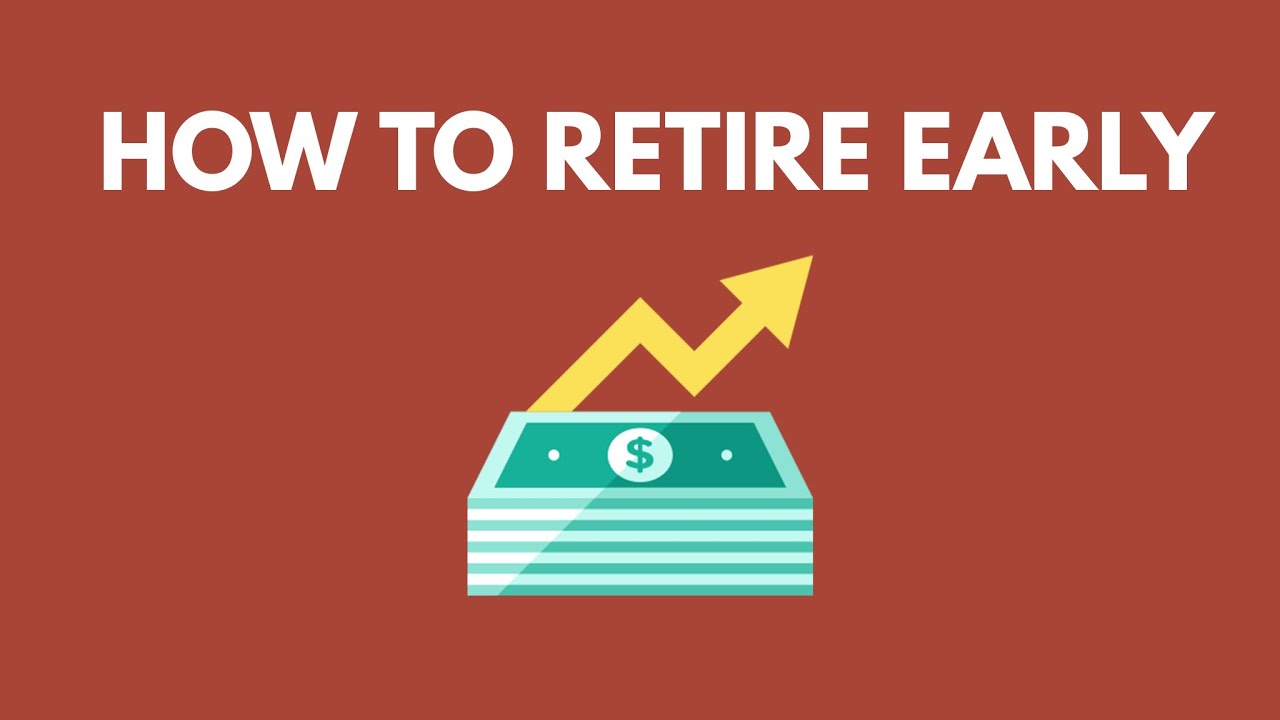How to Retire Early: The Complete Guide to Financial Freedom
 In a world where the traditional retirement age hovers around 65, the concept of early retirement has captured the imagination of millions. But what exactly does it mean to "retire early," and is it truly within reach for the average person? This comprehensive guide will walk you through everything you need to know about early retirement—from the initial planning stages to maintaining your lifestyle once you've achieved financial independence.
In a world where the traditional retirement age hovers around 65, the concept of early retirement has captured the imagination of millions. But what exactly does it mean to "retire early," and is it truly within reach for the average person? This comprehensive guide will walk you through everything you need to know about early retirement—from the initial planning stages to maintaining your lifestyle once you've achieved financial independence.
What Does Early Retirement Really Mean?
Early retirement isn't just about leaving your job before the traditional age of 65. For many, it represents something far more profound: financial freedom and the ability to choose how you spend your time without the constraints of needing employment income.
The modern early retirement movement, often referred to as FIRE (Financial Independence, Retire Early), has evolved beyond the simple notion of "not working." Today's early retirees often continue to engage in productive activities—they just do so on their own terms. Some start businesses they're passionate about, others transition to part-time consulting, and many dedicate themselves to volunteer work or creative pursuits.
Morgan Housel, author of "The Psychology of Money," puts it beautifully: "The ability to do what you want, when you want, with whom you want, for as long as you want, is priceless. It is the highest dividend money pays."
The Mathematics of Early Retirement
At its core, early retirement is a mathematical equation. The time it takes to reach financial independence depends on two primary factors: your savings rate and your expected withdrawal rate in retirement.
The Power of Your Savings Rate
Your savings rate—the percentage of your income you save—is the single most important factor in determining how quickly you can retire. This concept was popularized by the legendary Mr. Money Mustache (Pete Adeney), who demonstrated that a savings rate of 50% could lead to retirement in just 17 years, regardless of income level.
Here's a simplified breakdown:
- 10% savings rate = retirement in about 51 years
- 25% savings rate = retirement in about 32 years
- 50% savings rate = retirement in about 17 years
- 75% savings rate = retirement in about 7 years
This math works because of two factors: the more you save, the more money you accumulate; and the less you spend, the less you need to accumulate in the first place.
The 4% Rule and Your Retirement Number
The widely-cited "4% rule" suggests that retirees can safely withdraw 4% of their investment portfolio in the first year of retirement, then adjust that amount for inflation each year thereafter, with minimal risk of running out of money over a 30-year period.
This rule, derived from the Trinity Study conducted by professors at Trinity University, provides a simple formula for calculating your "retirement number"—the amount you need to save before retiring:
Retirement Number = Annual Expenses × 25
For example, if you need $40,000 per year to live comfortably, your retirement number would be $1 million ($40,000 × 25).
However, financial planner Michael Kitces has noted that the 4% rule was designed for a 30-year retirement horizon. For those retiring in their 30s or 40s, a more conservative withdrawal rate of 3-3.5% might be appropriate, which would increase the multiplier to 29-33 times annual expenses.
Strategies to Fast-Track Your Path to Early Retirement
1. Maximize Income While Controlling Lifestyle Inflation
The quickest path to increasing your savings rate is to grow the gap between what you earn and what you spend. This can be accomplished by:
- Developing valuable skills: Invest in education and training that increases your market value.
- Negotiating salary increases: Research by Linda Babcock, author of "Women Don't Ask," shows that negotiating just one's starting salary can add up to $1 million in lifetime earnings.
- Creating additional income streams: Side hustles, rental properties, or passive income sources can significantly accelerate your savings.
The key is to avoid lifestyle inflation as your income grows. Financial author Ramit Sethi advocates for "conscious spending," where you splurge on things you love while mercilessly cutting costs on things you don't.
2. Optimize Your Investment Strategy
Early retirement requires not just saving money but growing it effectively through investments. Consider:
- Low-cost index funds: Jack Bogle, founder of Vanguard, demonstrated that most active managers fail to beat the market over long periods, while charging higher fees. Index funds offer market returns at minimal cost.
- Tax-advantaged accounts: Maximize contributions to 401(k)s, IRAs, HSAs, and other tax-advantaged vehicles before investing in taxable accounts.
- Real estate investments: For many early retirees, rental properties provide both appreciation and income. As real estate investor Brandon Turner observes, "Real estate is the intersection of financial independence and traditional lifestyle."
3. Reduce Your Big Three Expenses
Housing, transportation, and food typically consume 60-70% of the average household budget. Optimizing these areas can dramatically increase your savings rate:
- Housing: Consider house hacking (renting out portions of your home), relocating to a lower-cost area, or downsizing.
- Transportation: The average car costs about $9,000 per year to own and operate. Living in a walkable area, using public transportation, or choosing a fuel-efficient vehicle can save thousands annually.
- Food: Meal planning, cooking at home, and strategic grocery shopping can reduce food expenses without sacrificing quality or enjoyment.
Financial independence blogger Paula Pant frames spending decisions with a powerful question: "You can afford anything, but not everything. What's most important to you?"
The Psychology of Early Retirement
The financial aspects of early retirement receive the most attention, but the psychological dimensions are equally important.
Defining Your "Why"
Early retirement requires significant sacrifice and discipline. Without a compelling reason—your "why"—it's difficult to maintain motivation over the years required to reach your goal.
Author Simon Sinek emphasizes that "People don't buy what you do; they buy why you do it." Similarly, you need to sell yourself on why you're pursuing early retirement. Is it to:
- Spend more time with family?
- Pursue creative passions?
- Travel extensively?
- Address health concerns?
- Contribute to causes you believe in?
Clarifying your why will help you make the difficult choices required along the way.
Preparing for the Identity Shift
Many early retirees experience an identity crisis after leaving their careers. As Ernie Zelinski notes in "How to Retire Happy, Wild, and Free," "Retirement is the perfect time to become the person you always wanted to be." This requires planning beyond finances.
Before retiring, consider:
- What activities will provide meaning and purpose?
- How will you structure your days?
- What communities will you be part of?
- How will you introduce yourself at parties?
Financial independence blogger Tanja Hester advises developing your "retirement identity" before leaving your job to smooth this transition.
Different Paths to Early Retirement
There's no one-size-fits-all approach to early retirement. Here are several popular variations:
The Traditional FIRE Approach
The classic FIRE method involves aggressive saving (often 50-70% of income) for 10-15 years, investing primarily in index funds, and then living off investment returns. This approach typically requires significant income and extreme frugality during the accumulation phase.
Coast FIRE
With Coast FIRE, you save aggressively early in your career until you reach a "coast number"—the amount that, if left to grow without additional contributions, will support you at traditional retirement age. After reaching this milestone, you only need to earn enough to cover current expenses, allowing your investments to "coast" to your final retirement number.
Barista FIRE
Barista FIRE involves amassing enough investments to cover most, but not all, of your expenses. You then work part-time to cover the gap and potentially provide benefits like health insurance. This approach allows for an earlier exit from full-time work while reducing the total savings needed.
Fat FIRE
Fat FIRE refers to early retirement with a higher annual spending level—typically $100,000 or more. This approach requires a larger nest egg but allows for a more luxurious lifestyle in retirement.
Lean FIRE
Lean FIRE is early retirement on a minimalist budget, often under $40,000 annually for a couple. This approach requires a smaller nest egg but demands frugality both during the accumulation phase and in retirement.
Overcoming Common Obstacles to Early Retirement
Healthcare Costs
For Americans, healthcare remains one of the biggest challenges to early retirement. Options include:
- Health insurance marketplaces: The Affordable Care Act provides subsidized coverage based on income.
- Health sharing ministries: These alternatives to traditional insurance can be more affordable for some.
- Medical tourism: Some early retirees travel abroad for major procedures at a fraction of U.S. costs.
- Building a larger healthcare fund: Financial planner Taylor Schulte suggests adding $300,000-$500,000 to your retirement number specifically for healthcare expenses.
Sequence of Returns Risk
Retiring just before a market downturn can devastate your portfolio's longevity—a concept known as sequence of returns risk. Strategies to mitigate this include:
- Building a cash cushion: Maintain 2-3 years of expenses in cash or short-term bonds.
- Establishing flexible spending rules: Be prepared to reduce withdrawals during market downturns.
- Creating income floors: Social Security, annuities, or rental income can provide stability regardless of market conditions.
- Planning for part-time work: The ability to earn even modest income during the early retirement years can significantly reduce sequence risk.
Social Pushback
Early retirement often faces skepticism or criticism from family, friends, and colleagues who follow traditional paths. Managing these relationships requires:
- Clear communication about your goals and values
- Finding community with like-minded individuals
- Developing confident responses to common questions
- Accepting that not everyone will understand your choices
The Role of Geographic Arbitrage
Living in a high-cost area can significantly extend your path to early retirement. Geographic arbitrage—earning in a high-income location and then retiring in a lower-cost area—can be a powerful strategy.
International retirement destinations like Portugal, Mexico, Thailand, and Ecuador offer a high quality of life at a fraction of the cost of major U.S. cities. Even within the United States, relocating from San Francisco to a city like Pittsburgh or Knoxville can cut living expenses by 50% or more.
Travel bloggers Amon and Christina of Our Rich Journey retired in their 30s with two children by leveraging geographic arbitrage, working in high-paying jobs in the San Francisco Bay Area while keeping expenses low, then relocating to Portugal for retirement.
Sample Early Retirement Timeline: A Case Study
Meet Sarah and Michael, a hypothetical couple earning a combined $120,000 annually. Here's how they achieved early retirement in 12 years:
Starting point (Year 0):
- Combined income: $120,000
- Savings rate: 15% ($18,000/year)
- Annual expenses: $102,000
- Net worth: $50,000
Phase 1: Getting Serious (Years 1-3)
- Increased savings rate to 35% by optimizing big expenses
- Moved to a smaller house, saving $15,000 annually
- Sold one car, saving $6,000 annually
- Cut dining out by half, saving $5,000 annually
- Started side hustles generating $12,000 annually
- New annual savings: $42,000 + investment growth
Phase 2: Acceleration (Years 4-8)
- Increased savings rate to 55%
- Career advancements raised income to $160,000
- Maintained same level of expenses
- Invested primarily in low-cost index funds
- Added rental property generating $500 monthly
- New annual savings: $88,000 + investment growth + rental income
Phase 3: Final Push (Years 9-12)
- Savings rate reached 65%
- Additional rental property acquired
- Investment portfolio benefited from compound growth
- Developed clear post-retirement plan
- Reached their number: $1.8 million (supporting $72,000 annual spending)
The Post-Retirement Reality
The story doesn't end once you reach your retirement number. Successful early retirees constantly adapt their strategies based on changing circumstances.
Creating Structure and Purpose
Without the structure of work, many early retirees struggle with how to spend their time. Research by psychologist Mihaly Csikszentmihalyi on "flow states" suggests that optimal happiness comes from engaging in challenging activities that require skill.
Early retiree and financial blogger Tanja Hester recommends creating a "retirement project list" before leaving your career, including both productive pursuits and leisure activities that will provide fulfillment.
Managing Family Dynamics
Early retirement can significantly impact family relationships. Couples need to navigate new dynamics when one or both partners retire, including:
- Division of household responsibilities
- Time spent together versus apart
- Differing visions of retirement
- Potential resentment if only one partner retires
Family therapist Dr. Sara Yogev suggests regular "state of the union" discussions to address these changes proactively.
Staying Financially Vigilant
Even after reaching financial independence, successful early retirees remain engaged with their finances. This includes:
- Regular portfolio reviews: Assessing performance and rebalancing as needed
- Tax planning: Strategies like Roth conversions can significantly impact long-term wealth
- Spending adjustments: Being flexible with withdrawals based on market conditions
- Contingency planning: Preparing for potential long-term care needs or family emergencies
The Evolving Landscape of Early Retirement
The early retirement movement continues to evolve. Current trends include:
- Semi-retirement becoming more common than full retirement
- Digital nomad lifestyles blending work and travel
- Greater emphasis on purpose and fulfillment beyond financial metrics
- Integration of environmental and social values into financial independence goals
- Increasing focus on community and collaborative approaches to financial independence
Financial independence blogger J.D. Roth observes, "The movement is maturing from its initial focus on extreme frugality to a more balanced approach that emphasizes quality of life and purpose."
FAQ: Early Retirement Questions Answered
How much do I need to retire early?
The traditional formula is 25 times your annual expenses, based on the 4% withdrawal rule. For example, if you need $50,000 per year, you'd aim for $1.25 million. For earlier retirements (more than 30 years), some experts recommend 28-33 times annual expenses.
What if the stock market crashes right after I retire?
This is called sequence of returns risk, and it's a legitimate concern. Strategies to mitigate this include: maintaining a cash buffer of 2-3 years of expenses, being flexible with your withdrawal rate, having some guaranteed income sources, and possibly working part-time during market downturns.
How do I handle healthcare before Medicare eligibility?
Options include health insurance marketplaces (possibly with subsidies), health sharing ministries, employer-provided retiree health benefits, spouse's insurance, part-time work with benefits, or expatriating to countries with affordable healthcare.
Will Social Security still be there when I need it?
Most experts believe Social Security will continue, though benefits may be reduced. The latest trustees report suggests that without changes, benefits would need to be cut by about 24% starting in 2034. For conservative planning, many early retirees either exclude Social Security from their calculations or count it at a reduced rate.
What about inflation?
The 4% rule actually incorporates inflation by allowing you to increase your withdrawals annually to keep pace with inflation. Additionally, many investments historically outpace inflation over the long term. Some early retirees also build in a margin of safety by using conservative return assumptions.
How do I access retirement funds before age 59½ without penalties?
Several methods exist: Roth IRA contributions can be withdrawn anytime without penalties; substantially equal periodic payments (SEPP/Rule 72t) allow penalty-free withdrawals from IRAs and 401(k)s; the Roth conversion ladder lets you convert traditional retirement funds to Roth and access them five years later; and taxable investments can be accessed anytime.
What if I get bored?
Many early retirees find that they're busier than ever pursuing passions, volunteering, traveling, or working on their own terms. The key is to retire "to" something, not just "from" something. Develop interests and community connections before retiring.
Is early retirement selfish?
Early retirement can actually increase your capacity to contribute to your family and society. Many early retirees volunteer, care for family members, mentor others, or solve problems through entrepreneurship. Financial independence gives you the freedom to contribute in ways aligned with your values.
Conclusion: Is Early Retirement Right for You?
Early retirement isn't for everyone. It requires significant discipline, planning, and often lifestyle adjustments that not everyone is willing to make. However, the principles of the FIRE movement—intentional spending, thoughtful investing, and aligning money with values—can benefit anyone.
Even if you never retire early, increasing your savings rate improves your financial resilience and expands your options. Building even a partial financial cushion provides more flexibility to change careers, reduce work hours, take sabbaticals, or weather unexpected challenges.
The most valuable insight from the early retirement movement might be the emphasis on examining what truly brings you fulfillment. As retirement researcher Dr. Michael Finke notes, "The happiest retirees are those who use their freedom to invest in relationships, engage in meaningful activities, and develop a sense of purpose."
Whether you aim to retire at 35, 55, or 75, the question worth asking is not just "How soon can I retire?" but "How can I create a life I don't want to retire from?"
Your journey to financial independence is exactly that—yours. By understanding the principles outlined in this guide, you can chart a course that aligns with your unique goals, values, and vision for the future.

